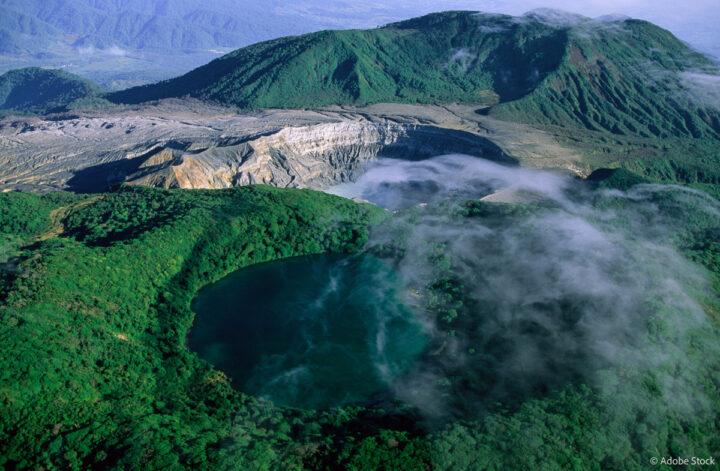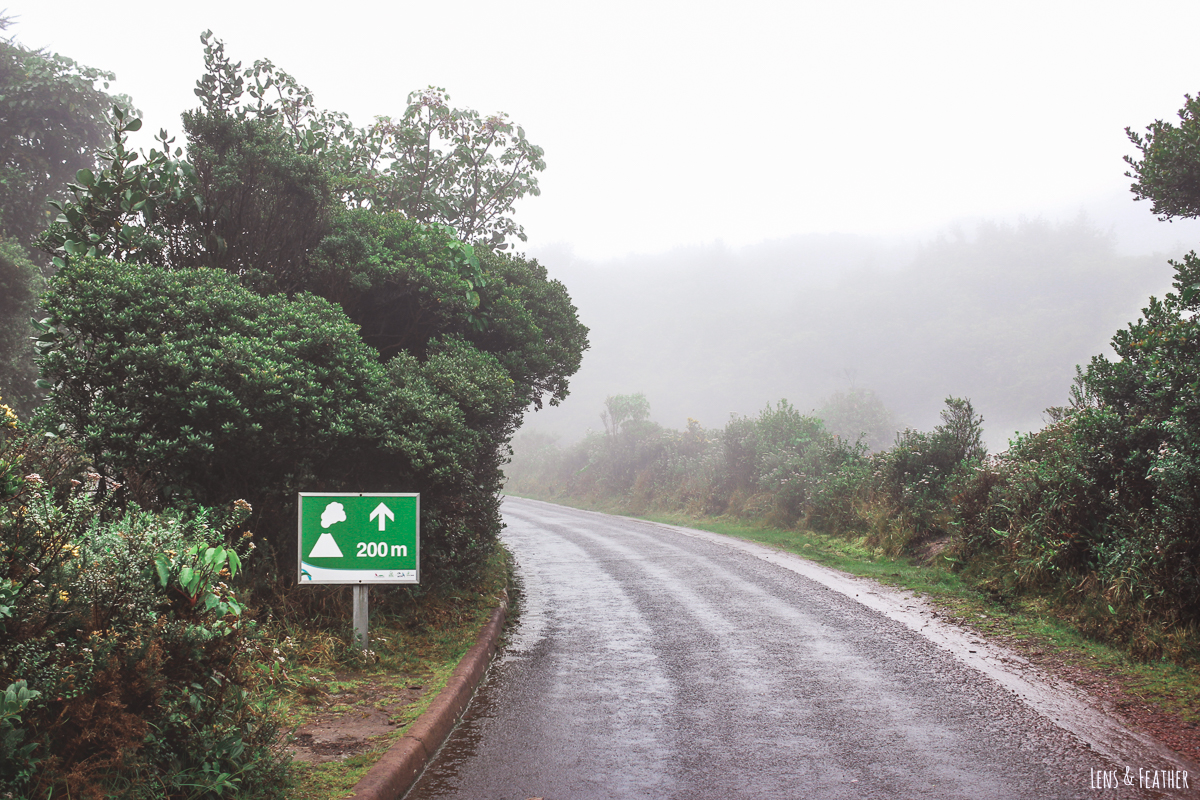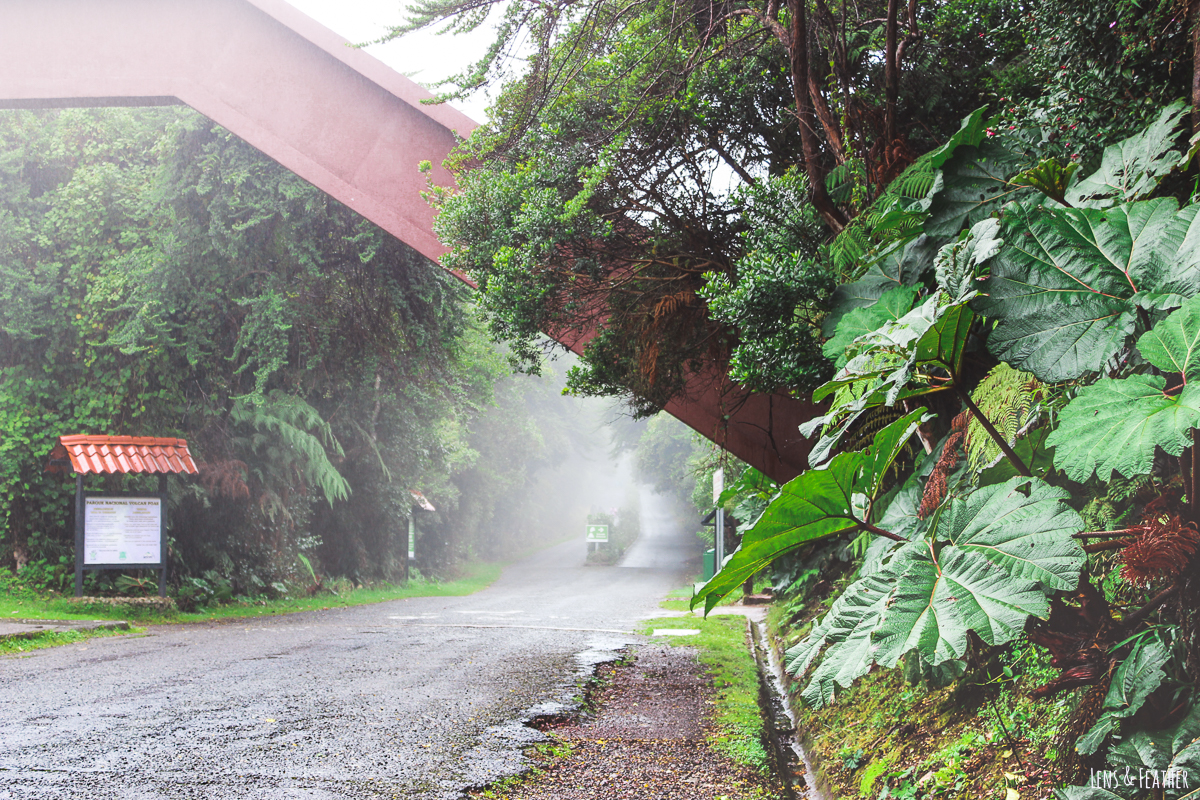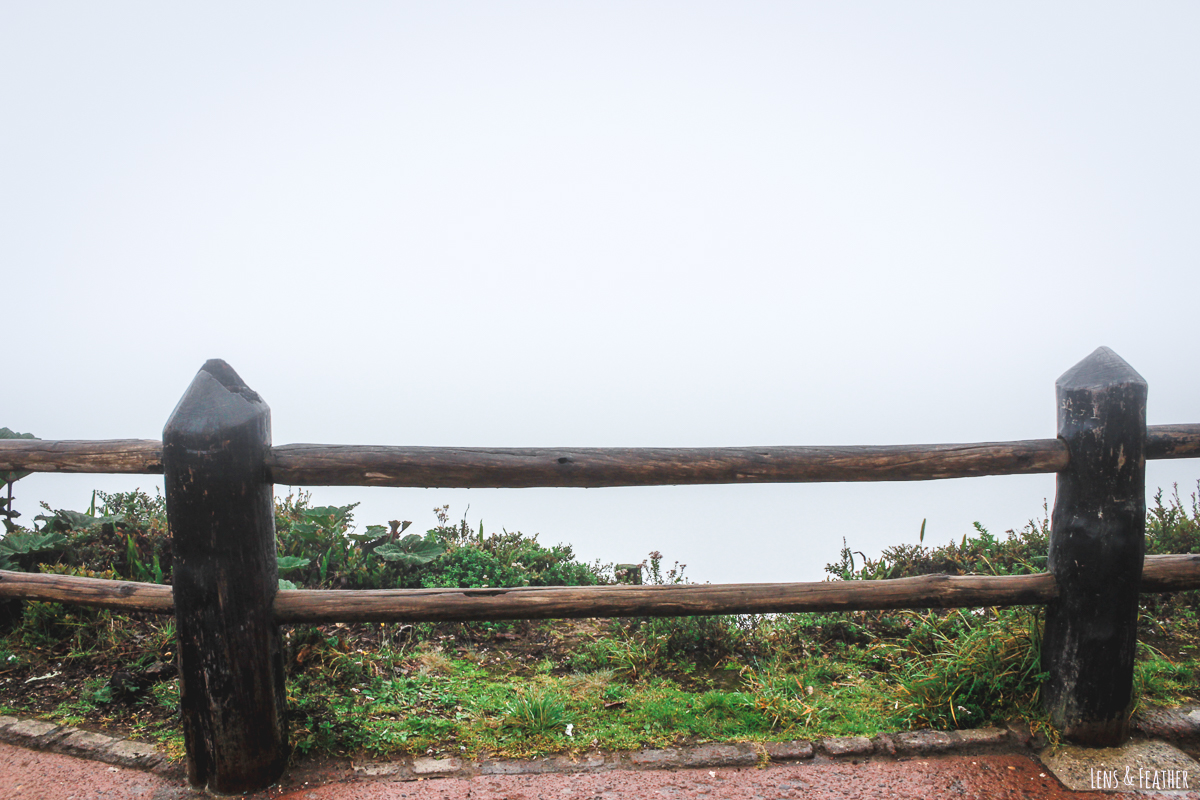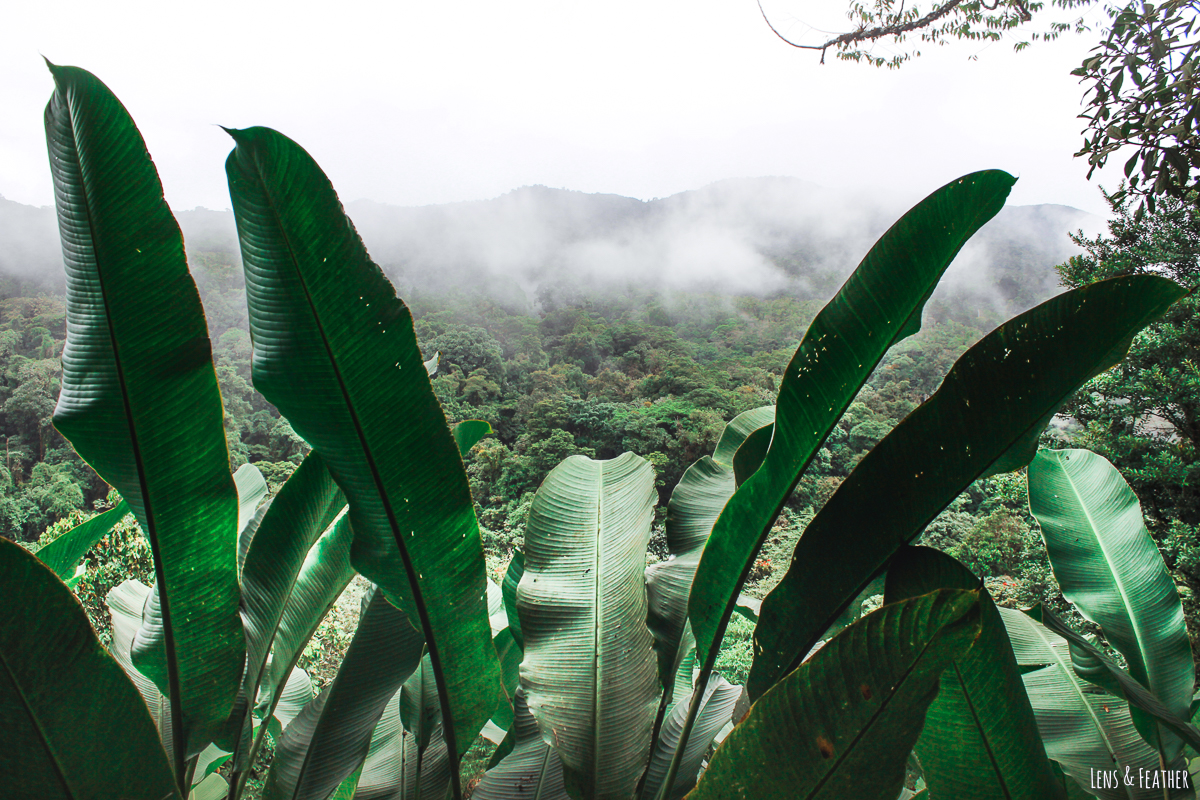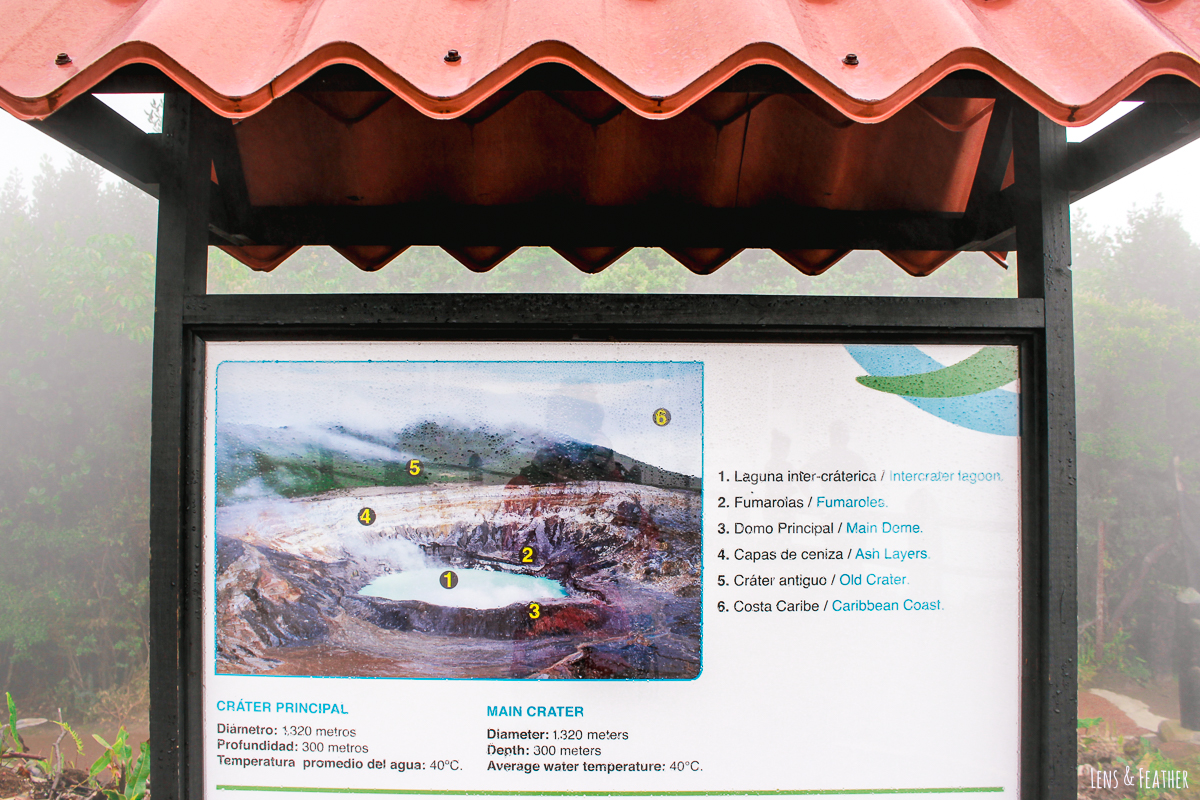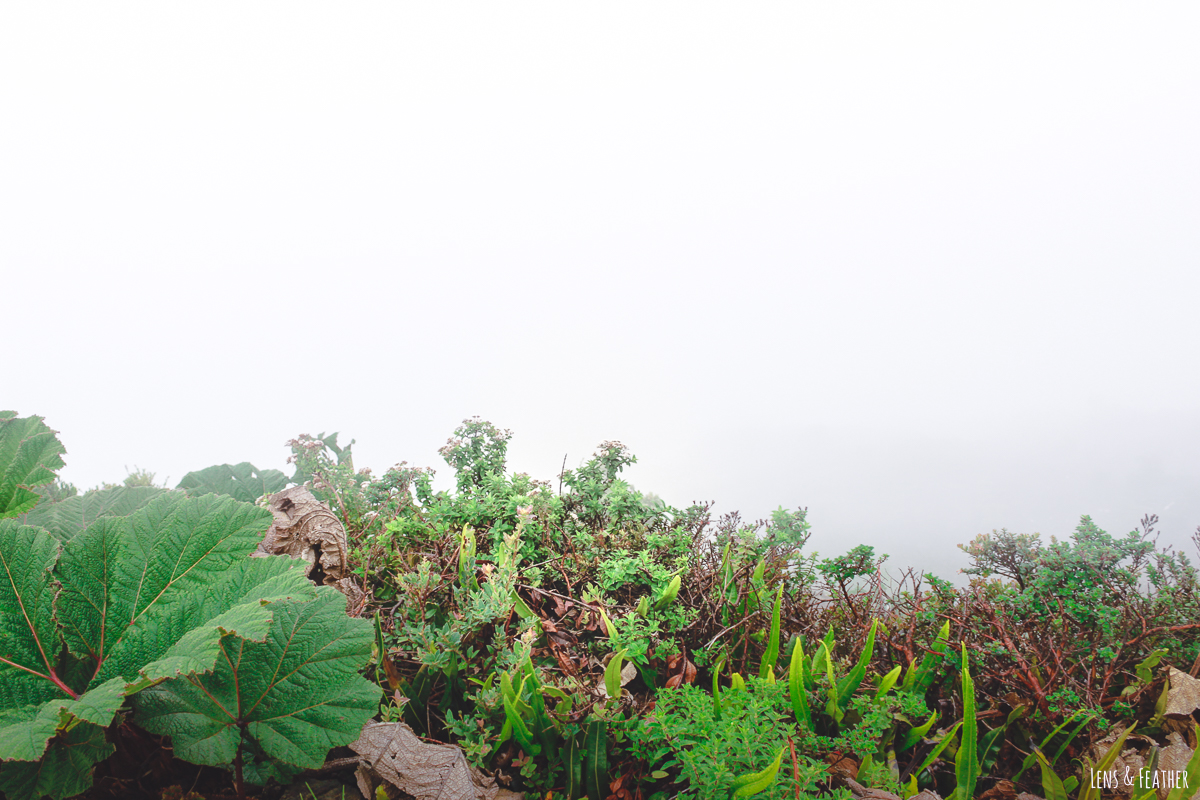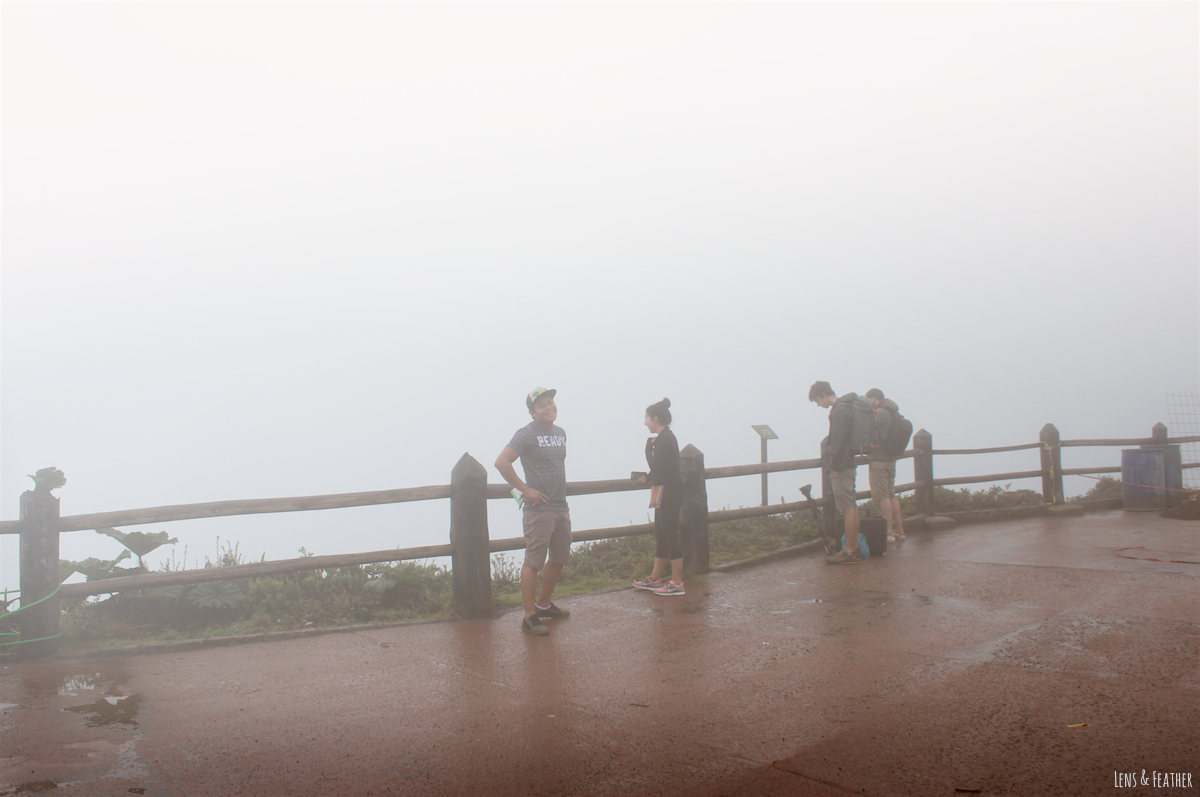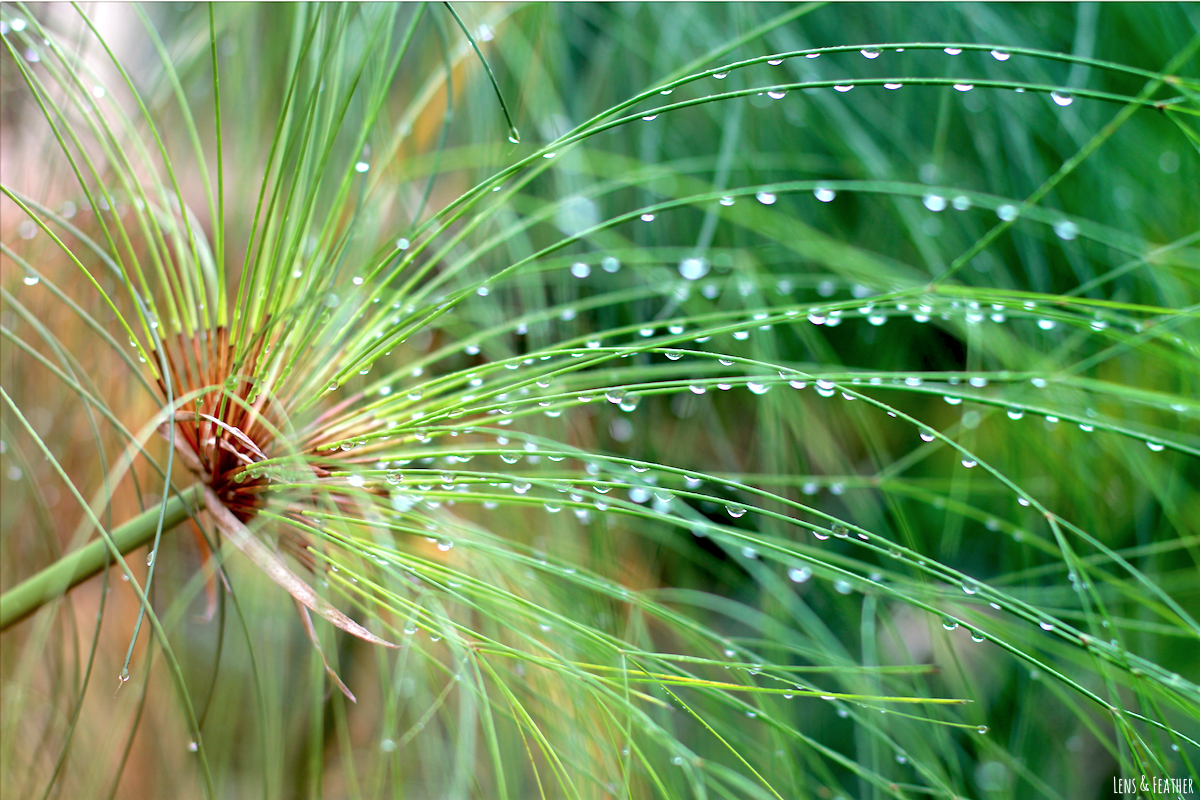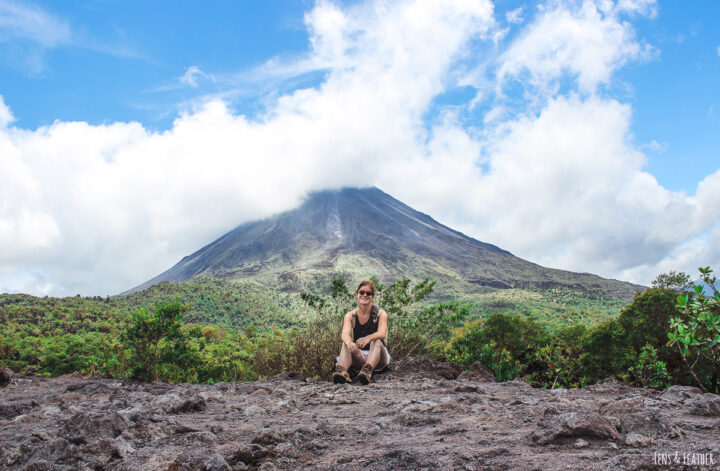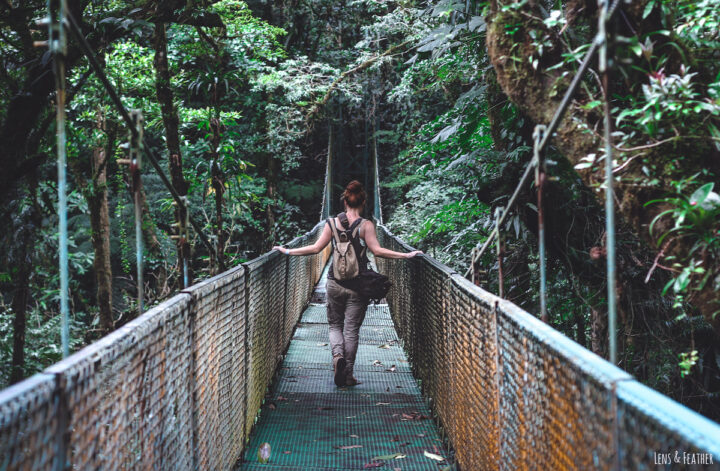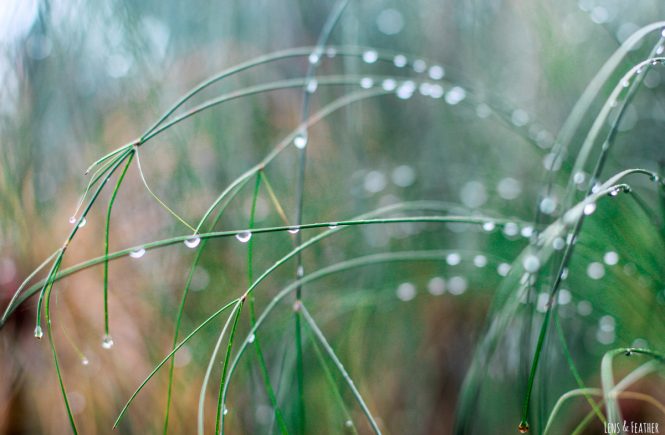Parque Nacional Volcán Poás is Costa Rica’s most visited national park, and for good reason. Located close to the capital, San José, it’s an easy trip that offers breathtaking views of a seething volcanic crater—or, depending on the weather, an impenetrable wall of fog. In this post, I’ll share everything you need to know before visiting Poás Volcano, along with my personal experiences during the rainy season.
OVERVIEW
Is Poás Volcano worth visiting?
Poás Volcano is an ideal destination if you want to marvel at an active volcano in Costa Rica without the strenuous hike. The well-paved roads allow you to drive up most of the way by car or bus, and from the final parking lot, it’s just a few hundred meters/yards to the main crater. The broad path to the lookout point is even suitable for wheelchair users, making it accessible to everyone.
This visit is perfect for volcano enthusiasts, families, and those with reduced mobility who want to experience the power of nature up close.
Remember, Poás is an active volcano, so the park may close unexpectedly if volcanic activity increases. It’s always a good idea to check the status of the park before visiting via the official SINAC website or local apps.
Visiting Parque Nacional Volcán Poás
A short walk from the parking lot will bring you to the visitor center, where you’ll find detailed information about the park. The center also has public restrooms, a souvenir shop, and a restaurant. However, I recommend heading straight to the main crater first, before the fog has a chance to rise.
You can still check out the visitor center on your way back.
To see or not to see
After a 600-meter (1,969 feet) walk, you’ll arrive at the lookout point, where—with some luck—you can admire the seething main crater. But keep in mind, the weather at the summit is unpredictable, and it’s not uncommon to be greeted by a thick wall of white fog instead of a clear view.
You should keep this risk in mind, so that you won’t be too disappointed if this is the case on the day you decide to visit Poas.
What to do if Poás Volcano is covered in fog?
Even if the crater is shrouded in fog, the trip is still worth it. The surrounding cloud forest is waiting to be explored, and there’s always a chance the wind might clear the clouds by the time you return from a short walk.
Don’t give up hope too quickly—revisit the viewpoint later!
Walking trails at Poás Volcano
From the main crater, you can take the Sendero Botos trail, a 1.4 km (0.87 miles) walk through a miniature cloud forest leading to Laguna Botos, a cold-water lake in an extinct crater.
This 30-minute walk is well worth it, even just for the unique cloud forest surroundings.
From the lake, you can continue along the 1.8 km (1.1 miles) Sendero Canto de Aves trail, a 45-minute walk through a larger forested area that’s often less crowded.
This path is a must for birdwatchers, as you might spot rare species like the fiery-throated hummingbird.
The short 400-meter (1,312 feet) Sendero Escalonia trail loops back to the main path, leading you back to the visitor center.
Practical information about Poás Volcano
Opening hours and fees
Opening hours: 8 am – 3:30 pm
Entrance fees: ₡ 8000 / $ 15 per person for tourists, ₡ 1000 / $2 for locals
Parking fee: ₡ 500 / $ 1
How to make a reservation for Poás Volcano
Due to high visitor demand and to help protect the delicate ecosystem, Poás Volcano National Park requires all visitors to reserve their tickets in advance. This is a crucial step, as you won’t be able to enter the park without a reservation, and daily entries are limited to specific time slots.
Here’s a step-by-step guide to help you book your visit:
- Go to the SINAC Website
Visit SINAC’s online reservation system, and select Parque Nacional Volcán Poás from the list of parks. - Choose Your Date and Time Slot
Select your preferred date and a specific time slot for entry. - Enter Visitor Details
Provide your name and passport number (for international visitors) and the number of people in your group. - Complete the Payment
The entrance fee is ₡8,000 ($15) for tourists. You can pay online using a credit or debit card. - Download Your QR Code
After payment, you’ll receive a confirmation email with a QR code. Save or print this ticket, as it will be required at the park entrance along with your ID or passport.
Tip: Since tickets can sell out, especially during the high season (dry season) and on weekends, it’s best to book as early as possible—at least several days in advance.
What if you booked a tour to Poás?
When booking a tour to Poás Volcano, the reservation process is typically handled by the tour company. This means you usually do not need to make a separate reservation through the SINAC website. However, it’s important to confirm this with your tour operator and bring your ID or passport.
Always check the details with the tour provider to avoid any surprises on the day of your visit!
Find an organized trip to Poás Volcano
If you’d rather skip the logistics of planning your visit, booking an organized tour to Poás Volcano is a convenient option. These tours often combine Poás with other nearby attractions, making them a hassle-free way to see more in one day.
Your transport, entry tickets, and sometimes even meals are organized for you. This is especially helpful if you prefer not to drive or figure out the public bus schedule (info below).
What is the best time to visit Poás Volcano?
For the best chance of clear views, visit early in the morning during the dry season. However, this is not a guarantee. The park is popular year-round, so it’s best to avoid weekends if possible to steer clear of the crowds.
During the rainy season, weekends are less busy, but regardless of when you visit, aim to arrive as early as possible, preferably at 8 AM.
Weather conditions
No matter how hot and sunny it is in the valley, the top of the volcano can be cold, windy, and rainy—at any time of year. At night, temperatures can even drop below freezing (32°F).
What to pack for Poás Volcano day trip
- A sweater and rain jacket (to stay warm and dry)
- An umbrella
- Sun protection
- Snacks and drinks (if you prefer not to eat at the restaurant)
- Solid shoes (though it’s even possible to walk to the main crater in flip-flops, sturdier shoes are recommended)
Sustainable tourism and park regulations
Poás Volcano National Park has strict environmental regulations to protect its delicate ecosystem. Here are a few concrete ways you can help preserve the park’s natural beauty while enjoying your visit:
- Stick to the trails: The designated paths are there to protect the delicate ecosystem. Wandering off-trail can cause unnecessary harm to plants and wildlife.
- Pack out what you pack in: Even though the park has trash bins, it’s always best to carry out any waste with you to minimize the park’s environmental footprint. Consider bringing a reusable water bottle and snacks in eco-friendly containers.
- Respect wildlife: Poás is home to many animals, and it’s essential to observe them from a distance. Avoid feeding them or disturbing their natural behavior.
By following these tips, we can all help ensure that Poás Volcano remains a pristine, magical place for generations to come.
How to get to Poás Volcano?
How to get to Poás Volcano by public bus
If you’re traveling through Costa Rica on a backpacker budget, taking the public buses is an easy and affordable way to reach Poás Volcano.
While there isn’t a direct bus from San José to Poás Volcano, it’s still straightforward to get there. First, you’ll need to head to Alajuela. I recommend catching the bus from the Tuasa bus station (located on Avenida 2, between Calle 12 and 14) no later than 8:15 AM. The ride to Alajuela takes about 45 minutes. Once you arrive, it’s just a one-block walk south to the Volcán Poás bus stop.
Cost of Bus from San José to Alajuela: around ₡600 ($1.10)
Total Round-Trip Cost (San José – Poás Volcano): ₡3,700 ($6.80)
From Alajuela, Coopetransasi offers a daily bus to the volcano at 9:00 AM, with a return trip at 2:30 PM. Each leg takes about 1.5 hours. Since these are the only public buses to Poás, make sure you’re at the stop on time!
Total Round-Trip Cost (Alajuela – Poás Volcano): Around ₡2,500 ($4.60)
How to get to Poás Volcano by car or taxi
One downside of using public buses to Poás is that you typically arrive around 10:00 AM, just when the clouds like to start rolling in and blocking the view.
If you’re traveling with others, renting a car or taking a taxi might be a better option. The route from Alajuela to the volcano is well-marked. Not only does this improve your chances of seeing the crater cloud-free, but it also helps you avoid the crowds that arrive later in the morning.
Cost of Car Rental: From ₡21,000 ($40) per day
Cost of Taxi from Alajuela to Poás Volcano: Around ₡16,000 ($30) each way
Cost of Taxi from San José to Poás Volcano: Around ₡27,000 ($50) each way
Other nearby attractions
If you’re looking to explore more of the area, the La Paz Waterfall Gardens are not far from Poás Volcano. The drive takes you through scenic farmland, and the route is easy to follow. If you get an early start to Poás, you can easily visit both spots in one day.
For a more relaxed day, consider visiting the Doka Coffee Estate, where you can tour a coffee plantation and learn about Costa Rica’s coffee culture. Alternatively, explore colorful Sarchí, a town famous for its hand-painted oxcarts and artisan crafts.
Where to eat nearby
For those who want to extend their trip, there are local sodas (small family-run restaurants) or the mercado central in Alajuela that serve traditional Costa Rican meals—perfect for grabbing a bite after your visit.
Where to stay near Poas Volcano
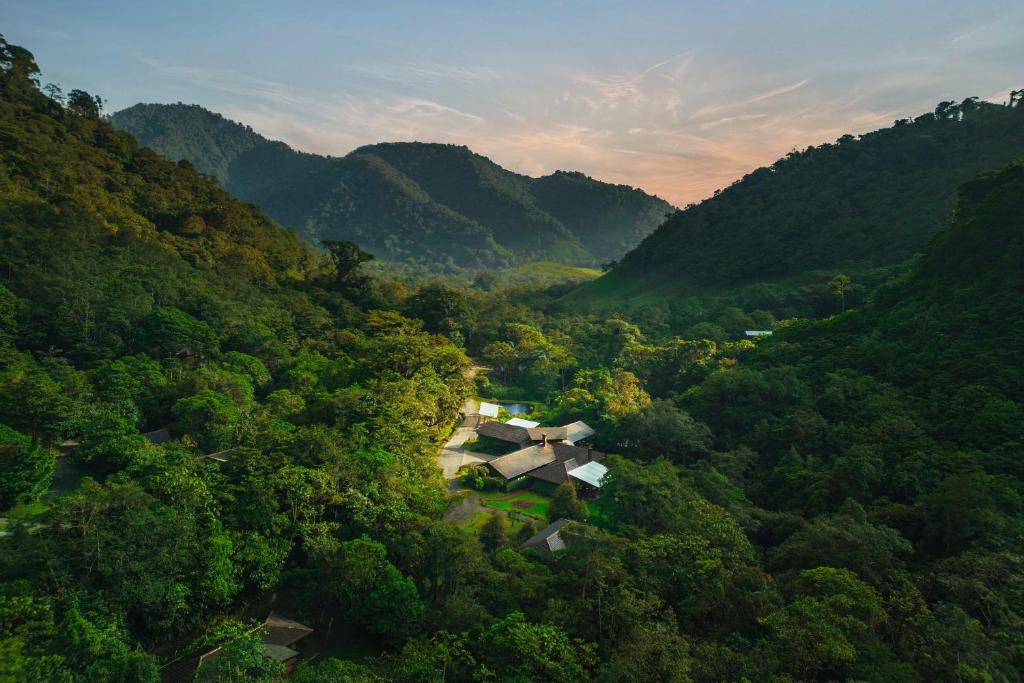
If you’d like to stay overnight, there are several eco-lodges and hotels nearby that offer a peaceful retreat in the countryside:
El Silencio Lodge & Spa
Located in Bajos del Toro, about 30 minutes from Poás, this eco-lodge is nestled in the cloud forest and offers a serene, sustainable escape. With luxury cabins, private decks, and eco-friendly practices, it’s perfect for nature lovers who want a peaceful retreat while enjoying activities like birdwatching, hiking, and waterfall visits.
Poas Volcano Observatory Lodge & Glamping
Located just 4 kilometers from the national park, this lodge offers a unique combination of traditional lodge-style rooms and glamping tents that provide a more immersive experience in nature. The eco-lodge is perched on a hillside with panoramic views of the surrounding landscape, including Poás Volcano.
The perfect choice for travelers seeking an unconventional, eco-friendly stay conveniently close to Poás Volcano for morning visits.
Poás Volcano Lodge
A renowned eco-lodge located on the slopes of Poás Volcano, offering stunning views of the surrounding highlands. As a famous classic in the area, it blends rustic charm with modern comforts, providing cozy accommodations in a lush, serene setting. The lodge features beautiful gardens, a library, and fireplaces, creating a welcoming atmosphere for guests. It’s perfect for travelers looking to explore Poás Volcano with easy access to nearby hiking trails.
Photography tips for Poás Volcano and foggy conditions

Whether you’re aiming for dramatic shots of the blue crater or moody fog-filled landscapes, Poás Volcano provides plenty of photographic opportunities. Due to the extremely humid air on my day of visit, I avoided changing lenses to prevent moisture from getting inside my camera. If you’re visiting in similar conditions, it’s best to plan ahead with the right lens.
While I didn’t have much time for photography during my visit to Poás Volcano, here are some tips to help you make the most of your photography time at Poás:
Choosing the right lens
- Wide-Angle Lens (16-35mm): A wide-angle lens is ideal for capturing the vast expanse of the crater and the dramatic cloud forest landscape. It allows you to include more of the scene, which is particularly useful for foggy, atmospheric shots.
- Zoom Lens (24-70mm): A versatile zoom lens is perfect for both wide landscape shots and closer details, like trees or hikers emerging from the mist. Since I didn’t have time to switch lenses, this is a great all-in-one option for flexibility.
- Telephoto Lens (70-200mm): If you have space for an extra lens, a telephoto is great for getting close-up shots of distant wildlife or details of the volcanic landscape without having to change lenses in the moist air.
How to photograph in foggy conditions
Fog adds a mystical quality to your photos, but it can also be tricky to shoot in. Here are a few tips to help you manage low-visibility conditions:
- Use Manual Focus: In fog, your camera’s autofocus can struggle, so it’s best to switch to manual focus. This will allow you to lock onto specific elements like a plant or rock that stand out in the mist.
- Adjust Exposure Compensation: Fog tends to make your camera underexpose the scene. I recommend adjusting your exposure compensation to +1 or +2 stops to brighten your shots and avoid overly dark images.
- Increase Contrast in Post-Processing: Fog softens the scene and reduces contrast. Plan to boost the contrast in post-processing to make your photos pop. You can also use the dehaze tool in editing software to bring out more details.
- Use Foreground Elements: Fog creates a dreamy effect by blurring the background. Focus on objects like trees, rocks, or people in the foreground to add depth and dimension to your photos.
- Tripod for Long Exposures: If you want to capture the movement of fog drifting above the crater, a tripod is essential for long exposures. Slowing down the shutter speed will give you that ethereal, motion-filled effect.
- Capture Movement in the Mist: Experiment with slower shutter speeds (1-2 seconds) to capture the movement of the fog as it shifts through the landscape. This can create a dramatic, otherworldly effect.
- On clear, blue-sky days: Using a polarizing filter will help reduce glare and make the colors of the crater and the surrounding landscape more vibrant. For the perfect crater shot, frame the scene with foreground elements like the volcanic rocks or nearby plants to add depth.
By keeping these tips in mind, you’ll be able to capture stunning photos at the volcano, whether you’re treated to clear views or shrouded in a blanket of fog.
My experience at Poás Volcano during the rainy season
The journey is the destination
At the end of June, my friends and I decided to drive from Heredia to Poás Volcano. The weather couldn’t have been more perfect during the drive—bright sunshine, and the view from the road over the cities and forests below was absolutely breathtaking. The journey itself was an adventure!
But, as we got closer to the summit, things took a turn. The temperature dropped, and a mist started to settle in.
By the time we reached the main crater, we were greeted by… a thick blanket of white fog. We could barely make out the crater, though the faint smell of sulfur reminded us that it was still there, hiding somewhere in the mist.
Hoping for a wind of change
On the bright side, even though it was a weekend, we had the entire lookout to ourselves—no crowds in sight! So, instead of gazing at the crater, we took a peaceful hike through the mystical cloud forest. The eerie, fog-covered trails made the visit worth it.
When we later returned to the crater, a few more hopeful visitors had arrived, all staring at the same foggy nothingness. Unfortunately, the wind didn’t cooperate.
Like many others before, I wasn’t lucky enough to catch a glimpse of the crater. But honestly, I didn’t regret the trip. The rest of the park is stunning and absolutely worth exploring.
And finally, I got one more reason to come back one day.
Have you had better luck at Poás Volcano? I’d love to hear about your experience! Let me know in the comments below.

